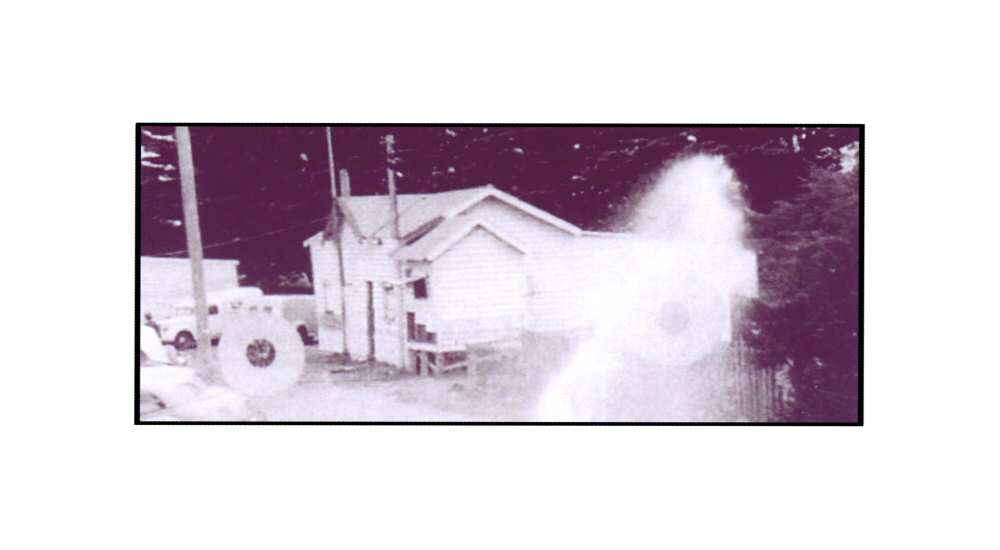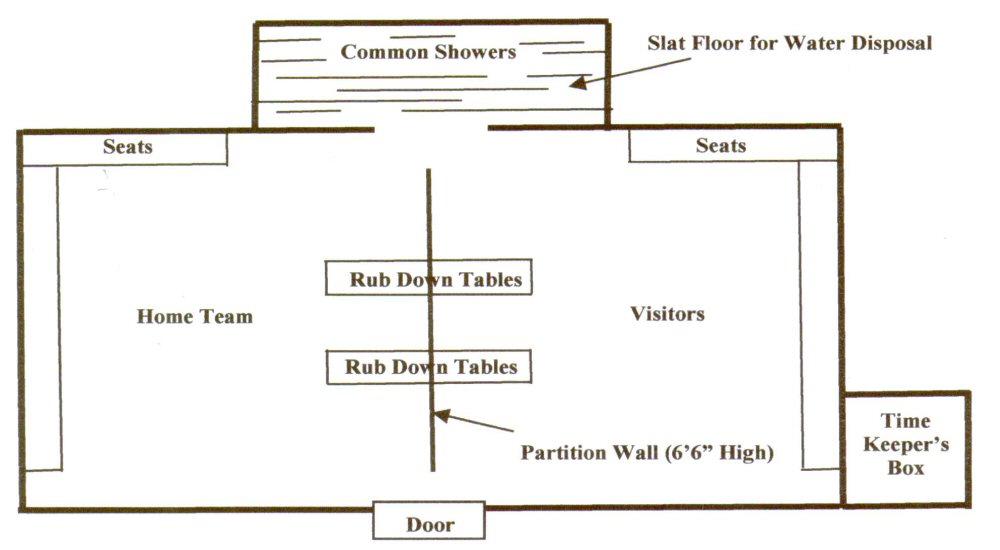1959 - A NEW HOME

It was clear that the existing rooms had well and truly passed their use-by date so there were some very good arguments for their replacement with something more substantial and functional. The Fire Brigade were certainly interested in having a grandstand erected alongside the fire track to enable a more comfortable viewing area for their competitions.
An approach to City of Chelsea Councillor Les Payne and City Engineer Alan Nieman received a positive response and a proposal was put forward. The cost of the new rooms was estimated at £5000 of which the Council would provide £4000. The remaining £1000 would have to be provided by the three tenants.
The construction was to have a sloping grandstand at the front with two small rooms beneath the seats. These rooms could be accessed from either end of the building. One would be allocated to the groundsman for his roller, mowers and chemicals. The other was to be used as storage for the Fire Brigade.At the rear of the building was a large open area with two sets of showers and toilets for use by the football and cricket clubs. There was to be a folding partition across the centre of the room to enable them to be divided into separate change rooms for the opposing teams. Also included in this section was a small area to be used as a kitchen and bar.
To summarise, the Fire Brigade were to contribute £700 of the £1000 required from the three clubs and, in return they had the use of about 10% of the floor space and the opportunity to use the grandstand for competitions that may occur once or twice a year and usually on Sunday. The other two clubs who had a lion’s share of the space available plus unlimited usage would have to find £300 between them. Seemed like a pretty good deal for the football and cricket clubs, but it was soon to get even better.
Construction had started when the two clubs approached the Council with a sad luck story about their inability to raise the necessary £300. The Council relented on their requirement and allowed them to retain their tenancy without paying a cent. One can only assume that Cr Les Payne did some pretty smooth talking at that particular meeting.
The outcomes, however, were all positive as the three clubs resided in harmony for many years with only the occasional good humoured exchange occurring when an unsuspecting cricketer would cop a spray as he was going out to bat. The practising firemen always enjoyed that bit of light entertainment.
THE CLUBROOMS as they stood in 1957. Note the time-keeper’s box in the foreground with the missing weather boards. The round objects (one covered in spray) are the Fire Brigade’s targets for practice. The Bowling Club fence is to the right.
‘COW SHEDS’
My clearest and most memorable recollection of my years at the club was that outstanding edifice called the football clubhouse with home and visitor’s change rooms and showers. Many called them ‘Cow Sheds’. They were so bad that the Committee held their meetings at other venues or in private homes.
The meetings I attended were held at the premises of a Mrs Buckingham in The Strand. Known as Buckingham Palace, they fronted The Strand at what today is Victory Park adjacent to the Life Saving Club.
Author : RON JACOBS
A PLAN VIEW OF ORIGINAL CLUBROOMS
Note: Common access to showers and ground—the team’s shared a certain intimacy during these times. One can imagine that the atmosphere in the rooms could have ranged from dead calm to noisy, threatening aggression, depending on the events that had transpired out on the oval.
There was no escape from the happenings in the opponent’s change-rooms.

<< Back